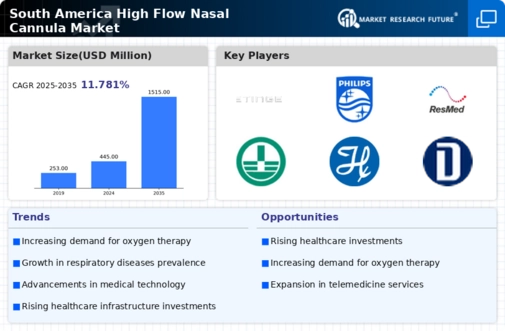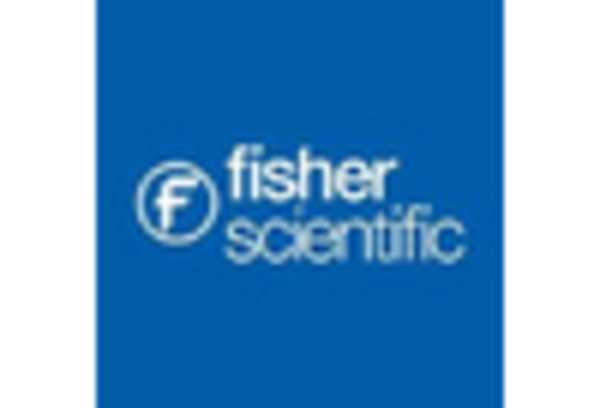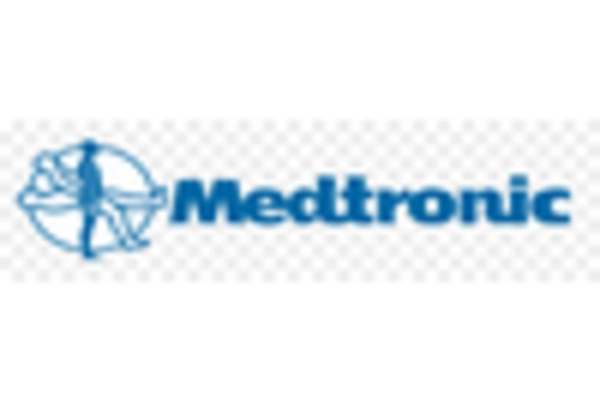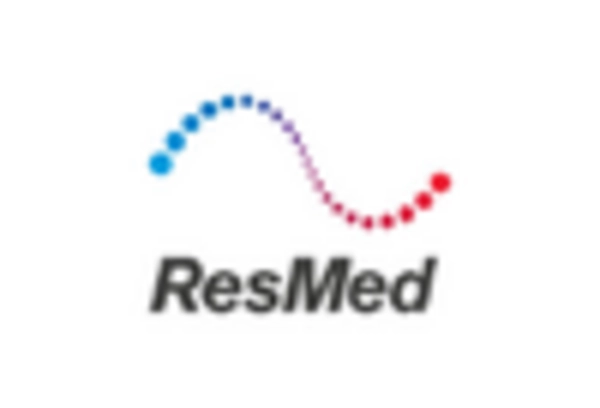Shift Towards Patient-Centric Care Models
The high flow-nasal-cannula market is being influenced by a shift towards patient-centric care models in South America. Healthcare providers are increasingly focusing on delivering personalized care that prioritizes patient comfort and satisfaction. High flow-nasal-cannula devices align well with this trend, as they offer a non-invasive and comfortable alternative to traditional oxygen delivery methods. This shift is supported by patient feedback and clinical studies that highlight the advantages of high flow-nasal-cannula systems in enhancing the quality of care. As healthcare systems adapt to these evolving models, the demand for high flow-nasal-cannula devices is expected to grow, potentially leading to a market expansion of around 6% over the next few years.
Growing Prevalence of Respiratory Disorders
The high flow-nasal-cannula market in South America is experiencing growth due to the increasing prevalence of respiratory disorders such as chronic obstructive pulmonary disease (COPD) and asthma. According to health statistics, respiratory diseases account for a significant portion of morbidity in the region, with estimates suggesting that around 10% of the population suffers from some form of respiratory condition. This rising incidence necessitates effective oxygen delivery systems, thereby driving demand for high flow-nasal-cannula devices. The ability of these devices to provide high levels of oxygen with comfort and ease of use makes them a preferred choice among healthcare providers. As healthcare systems in South America continue to evolve, the focus on improving respiratory care is likely to enhance the growth trajectory of the high flow-nasal-cannula market.
Rising Awareness of Non-Invasive Ventilation
There is a notable increase in awareness regarding non-invasive ventilation techniques among healthcare professionals and patients in South America. This trend is significantly impacting the high flow-nasal-cannula market, as these devices are recognized for their effectiveness in delivering oxygen without the need for invasive procedures. Educational initiatives and training programs are being implemented to inform healthcare providers about the benefits of high flow-nasal-cannula systems. As a result, the adoption rate of these devices is likely to increase, with market analysts projecting a growth rate of around 7% annually in the coming years. This heightened awareness is expected to lead to improved patient outcomes and a greater reliance on high flow-nasal-cannula technology.
Regulatory Support for Innovative Medical Devices
Regulatory bodies in South America are increasingly supportive of innovative medical devices, which is positively impacting the high flow-nasal-cannula market. Streamlined approval processes and favorable regulations are encouraging manufacturers to introduce advanced high flow-nasal-cannula systems that incorporate the latest technologies. This regulatory environment fosters innovation and competition, leading to a wider variety of products available in the market. As a result, healthcare providers are more likely to adopt these advanced devices, enhancing patient care and outcomes. The market is expected to see a growth rate of approximately 5% as new products are introduced and gain acceptance among healthcare professionals.
Increasing Investment in Healthcare Infrastructure
Investment in healthcare infrastructure across South America is a crucial driver for the high flow-nasal-cannula market. Governments and private entities are channeling resources into enhancing healthcare facilities, particularly in urban areas. This investment is reflected in the construction of new hospitals and the upgrading of existing ones, which often includes the procurement of advanced medical equipment. Reports indicate that healthcare spending in South America is projected to grow at a CAGR of approximately 5% over the next few years. As healthcare facilities expand and modernize, the demand for high flow-nasal-cannula devices is expected to rise, as these devices are integral to providing quality respiratory care in both emergency and routine settings.


















Leave a Comment